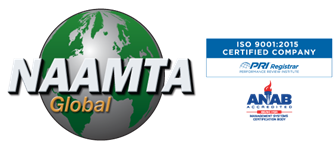| Tuesday October 23, 2012 at 2:00PM | |||||||||
|
Several months ago I joined the American Academy of Pediatrics’ Section on Transport Medicine. Being a part of a national organization that is immersed and driven by research and evidence-based practice has proven to be a paradoxical experience. I recently attended the AAP national conference in New Orleans and came away with more questions than I had before I attended (I guess that’s good). Like most of the health care professionals there, I found myself constantly asking the question, “Does this apply to my situation? In deed, does this apply to the institutional process we call ‘medical transport accreditation’?” Ours is a profession that is instinctually motivated by “best practice.” As such, I found myself asking one question: Are there any “benchmark best practice standards” for the accreditation process of medical transport programs? As part of the conference, we took part in a consensus project to determine some benchmark metrics for neonatal and pediatric transports. The Academy’s Section on Transport Medicine will be submitting a consensus statement following further evaluation and analysis of the data from the conference. Throughout the conference, reference was made to quality management (a hallmark of NAAMTA’s ISO processes). Focus was repeatedly brought to bear on the Institute of Medicine’s (IOM) six improvement domains for health care as outlined in their 2001 report Crossing the Quality Chasm: A New Health System for the 21st Century. This has become a rubric by which health care should be analyzed and areas of improvement identified. They aim at: Safety: Interventions should be aimed at avoiding injuries to patients from the care that is intended to help them. Effectiveness: Institutes should provide services based on scientific knowledge to all who benefit, and refrain from unbeneficial services. Patient-centered: All care should be respectful of and responsive to individual patient preferences, needs, and values, and ensure that patient values guide all clinical decisions. Timeliness: Health care services should reduce waits and harmful delays for both those who receive and those who give care. Efficiency: Institutes should avoid waste, including waste of equipment, supplies, ideas, and energy. Equitable: Health services should provide care that does not vary in quality because of personal characteristics such as gender, ethnicity, geographic location, and socioeconomic status. The consensus among all who presented at the conference and all who attended is clear—a health care system that achieves improvements in these six areas would be better at meeting patient needs. I would refer all providers of health care to a careful consideration of the entire report. So after asking all these questions, I ask two questions: Q: “How does this all apply to medical transport programs and the services they provide? A: These improvement domains of patient health care provide a framework by which transport programs can apply their own internal quality improvement assessment processes as well as the services of NAAMTA that help programs rise to the high standards of safe and quality patient care in the transport setting. This is NAAMTA’s mission. Q: Can this same assessment rubric be applied to the very accreditation organizations that evaluate medical transport programs? A: This a resounding “Yes.” Any external accreditation organization that seeks to provide an assessment and statement of a medical transport program’s safety and quality of patient care should itself be held to the same transparent assessment and quality improvement evaluation process. I am proud to say that NAAMTA’s ISO 9001:2008 certification provides the “evidence” upon which our organization is based. This evidence-based standard supports our commitment to providing unbiased equity to each transport program we serve. Our alliance provides the platform for consensus of “best practice.” Upon returning home from this outstanding conference, I will be eager to place the medical standards and auditing processes of NAAMTA under the rubric “microscope” of the IOM’s Six Domains of Improved Patient Care. In an industry where safety and quality of patient care is the very essence of our mission and scope of care, we share this same commitment to all our members, both current and future. So I repeat my last question—“Are there any “benchmark best practice standards” for the accreditation process of medical transport programs? The answer is NAAMTA. |
|||||||||
|
|||||||||
Clinical Operations Forum
Blog Owner
Blog Top Tags
There are no items to show you
Post Archives
Blogroll
| Adam Orgill's Blogs | |
|
|
| Adam Orgill's Favorite Blogs | |
| [none] |








 Toolbox
Toolbox
